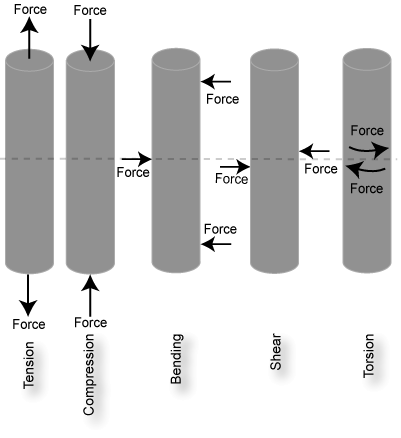Mechanical Engineering- Loading conditions
Loading Conditions
The application of a force to an object is known as loading. Materials can be subjected to many different loading scenarios and a material’s performance is dependent on the loading conditions. There are five fundamental loading conditions; tension, compression
, bending, shear
, and torsion
. Tension is the type of loading in which the two sections of material on either side of a plane tend to be pulled apart or elongated. Compression
is the reverse of tensile
loading and involves pressing the material together. Loading by bending involves applying a load in a manner that causes a material to curve and results in compressing the material on one side and stretching it on the other. Shear
involves applying a load parallel to a plane which caused the material on one side of the plane to want to slide across the material on the other side of the plane. Torsion
is the application of a force that causes twisting in a material.

If a material is subjected to a constant force, it is called static loading. If the loading of the material is not constant but instead fluctuates, it is called dynamic
or cyclic loading. The way a material is loaded greatly affects its mechanical properties
and largely determines how, or if, a component will fail; and whether it will show warning signs before failure actually occurs.

Comments
Post a Comment